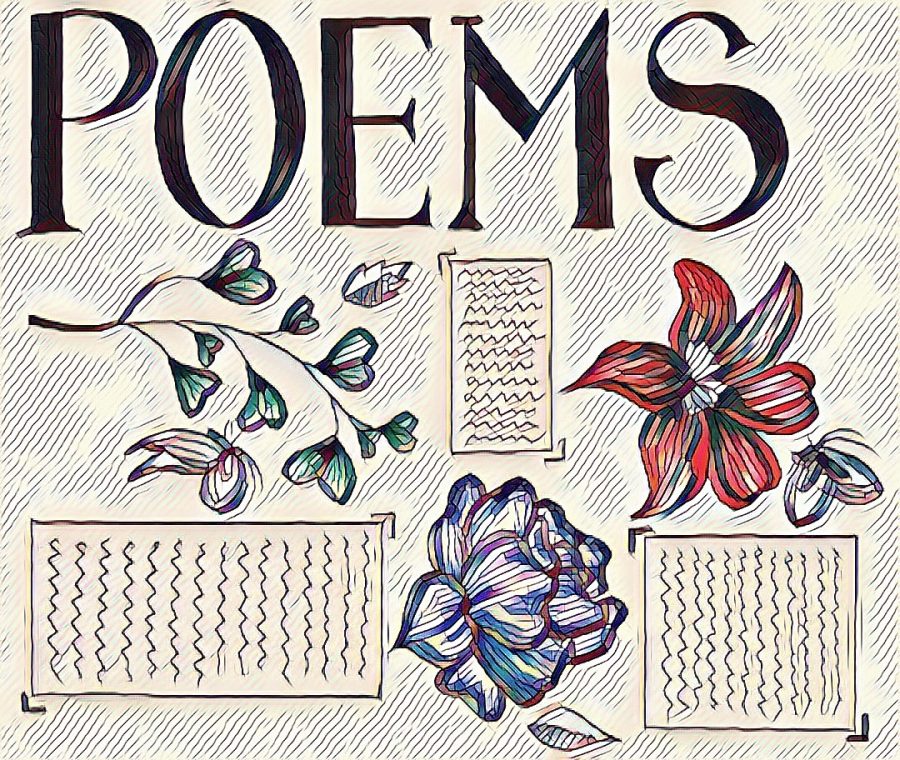Poetic flowers to read this spring!
April 11, 2023
Students of UT Austin: take a moment to appreciate the art of poetry. Poetry is a beautiful form of literature that can take you on a journey of emotions and imagination.
Many students may feel that poetry is a daunting and prestigious form of literature. However, this is a misconception.
“Poetry is one of the most digestible, understandable, thought-provoking forms of literature that you can possibly produce,” Plan II and writing and rhetoric sophomore Joshua Russell said. “I think it can make all the things that we want to bring to light matter in a way that everybody can reach.”
In pursuit of taking the leap into reading and appreciating more poetry, here are a few literary flowers that may enlighten you this spring.
1. Daffodils by William Wordsworth
Daffodils is a beautiful example of romantic poetry – a literary movement that places significance on individualism and emotion. Wordsworth utilizes a vivid landscape and natural imagery to symbolize his experiences and contentment.
Because of its simplicity and accessibility, Daffodils is an incredible introduction to poetry for those who aren’t well-versed in the genre. The poem’s rhythmic structure and rhyme scheme make it an enjoyable read.
Tulips takes an entirely different direction than Daffodils. Tulips is a profoundly emotional piece that explores Plath’s difficulties with her identity, mental illness and domesticity. The poem is challenging and thought-provoking, requiring a certain level of intellectual engagement to comprehend the metaphorical “tulip.”
Tulips explores the haunting yet memorable depiction of the human psyche through the lens of a woman. Plath narrates her struggle to cope with gender roles while navigating life in a devastatingly good read.
3. The Lily of the Valley by Paul Laurence Dunbar
The Lily of the Valley is a gorgeous poem where Dunbar utilizes the lily as a symbol of honor, selflessness, and tribute to unsung heroes. Dunbar was a pioneer in the movement to establish African American literary tradition. The Lily of the Valley uses evocative imagery to reflect the inherent good of humanity.
Historically, the poem personifies the Lily of the Valley to condemn the violence of World War I. It’s a must-read for anyone looking to find positivity in the face of darkness.
4. Red Carnations by Ella Wheeler Wilcox
Red Carnations is a wonderful tribute to coping with the loss of a loved one; specifically, the love of your life. The poem follows a woman who has lost her lover and must cope with intense feelings of pain and grief. Wilcox personifies “love,” “sweet constancy” and “beauty” to articulate heartache.
Red Carnations perfectly encapsulates Alfred Tennyson’s quote: “It’s better to have loved and lost than never to have loved at all.” For anyone who has ever experienced heartbreak, allow this poem to soothe you.
UT provides students with many opportunities to become acquainted with poetry by hosting events like Poetry on the Pond and offering courses taught by world-renowned professors.
“There are a lot of poetry readings that occur from the Michener Center and the New Writers Center. Once a month (there’s) a noon-time reading on the plaza in front of the HRC,” said Plan II World Literature professor Carol MacKay. “There is another forum…for (poets) to come and speak…and is in the Joynes Reading Room at Carothers Hall.”
Students should take advantage of UT’s extensive poetry resources to further appreciate this art form. Although these selected poems only scratch the surface of poetry, they are a great way to see the genre in a whole new light!
Chaudhuri is a Plan II and economics freshman from Coppell, Texas.
















